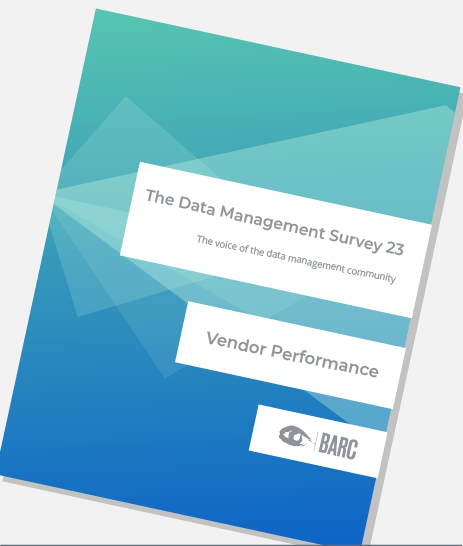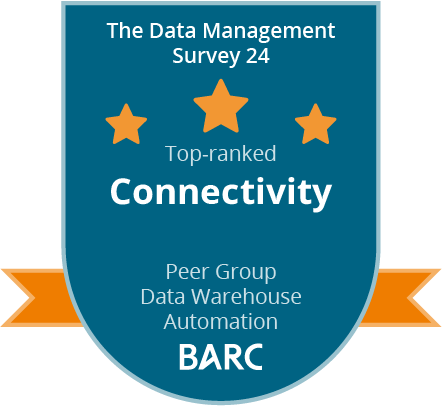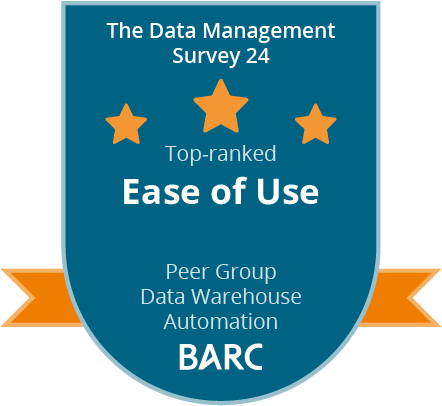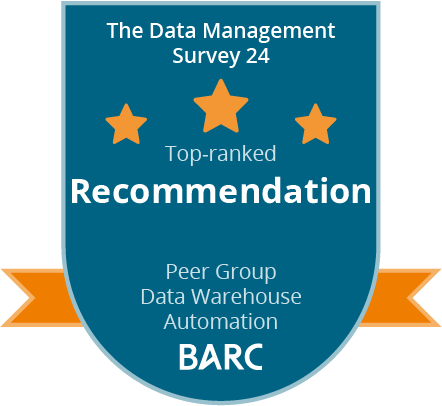
TimeXtender is a software provider specializing in data warehouse automation. Its headquarters are located in Aarhus (Denmark) and Washington (USA). The company was founded in Denmark in 2006 to minimize coding and automate repetitive tasks for data extraction. Since then, it has formed technology partnerships with several other large vendors and increased its activities in the United States. The company now has 79 employees that serve more than 3,300 customers through its global network of over 200 partners.
TimeXtender is a low-code data integrator and estate builder. Using TimeXtender, organizations can easily integrate their siloed data into a data lake, model a data warehouse, and define data marts for multiple BI tools and endpoints. TimeXtender overlays data storage infrastructure, connects to many data sources, and integrates data preparation capabilities that users need into a single, unified solution.
TimeXtender’s main goal is to empower non-technical users by automatically generating code to extract data. However, it also supports custom code if necessary. In 2017, TimeXtender moved to a subscription-only model, making it a software as a service (SaaS) company. The product offering consists of TimeXtender Portal, TimeXtender ODX Service and TimeXtender Desktop. It supports on-premises, cloud and hybrid deployment models. For cloud, it is closely associated with Microsoft Azure and more recently with Snowflake. Most implementations are deployed on-premises. The data model is highly configurable and supports most modeling styles, in particular Inmon and Kimball. TimeXtender can extract data from over 250 data sources, the most popular being SQL Server, SAP, Dynamics, Oracle, DB2, REST and CSV.
TimeXtender guides users step-by-step through the process of ingesting data, building data warehouse models and building data marts. The data warehouse is viewed as a whole, rather than as single pipelines. Structures and relationships throughout the process are arranged on one screen, providing a clear overview and reducing errors. TimeXtender emphasizes simplicity through a no-code/low-code development interface. The developed models can then be deployed to the appropriate environment with the push of a button. Microsoft SQL Server, Azure Synapse Analytics, Azure SQL Database and Snowflake are currently supported as target environments. All actions with data are recorded as metadata. This enables the platform’s source agnostic system and flexible exchange of data. It also facilitates developing further support functions. For example, TimeXtender uses metadata-based data lineage to detect data dependencies and automatically orchestrate projects based on this information.
With respect to efficiency, TimeXtender reduces and even eliminates the human effort of various development steps. Predefined sets of tasks, known as Execution Packages, simplify development and can accelerate time to market. For performance, TimeXtender automatically reorganizes the execution plan to provide the fastest possible execution of all selected tables. To improve reliability, errors generated by the software or by underlying platforms can be logged and analyzed from the point of failure. TimeXtender sends error notifications by email and allows users to roll back changes. TimeXtender follows a 3-week release cycle and provides hotfixes in between for critical issues.
TimeXtender recently announced a new ChatGPT-enabled data integration co-pilot, XPilot, to enhance user experience with real-time, knowledgeable assistance. The data presented in this Vendor Performance Summary was collected before this release so it is not represented here. Also, TimeXtender announced early in 2023 its first API release, allowing users to remotely execute and monitor jobs. Anticipated developments include extending connectivity and adapting the functionality of the deployment model. In the future, TimeXtender plans to further expand the number of target systems it supports. Snowflake support signals a first step in moving beyond existing Microsoft target systems to offer greater choice to customers.

User & Use Cases
Customers use TimeXtender for BI/data warehousing (91 percent) and data integration (83 percent). Notably, 100 percent of respondents use TimeXtender for data warehousing automation, a significant increase from 67 percent last year. This is a testament to their commitment to automating the data integration process. With 30 percent using the platform for the data lakehouse and 4 percent for data mesh, the majority of users stick to traditional data lakes and data warehouses for their needs.
Two thirds of TimeXtender’s customer base comprises mid-sized companies with 101-2,500 employees. 69 percent of customers have some form of on-premises deployment, 30 percent hybrid and 39 percent strictly on-premises. Since last year TimeXtender has significantly increased its penetration, from a median of 3 to a median of 20 consumers per company. Only 26 percent of respondents have employees using the platform for self-service analytics and 17 percent have business users using it for data preparation. This suggests the majority of users have technical roles. With relatively low use outside of data integration and warehousing, TimeXtender does not appear to provide functionality for data oversight such as data discovery, data governance and data stewardship.
TimeXtender has a mean of 3 admins per company, much lower than the mean of 9 for the Data Warehouse Automation peer group. It also has a lower than average number of experts per company: a mean of 3 versus a mean of 14 for the peer group. These statistics support the idea that TimeXtender requires little oversight and remains easy to use. Consumers use TimeXtender frequently; 86 percent use it at least several times a week and 55 percent use it several times a day.
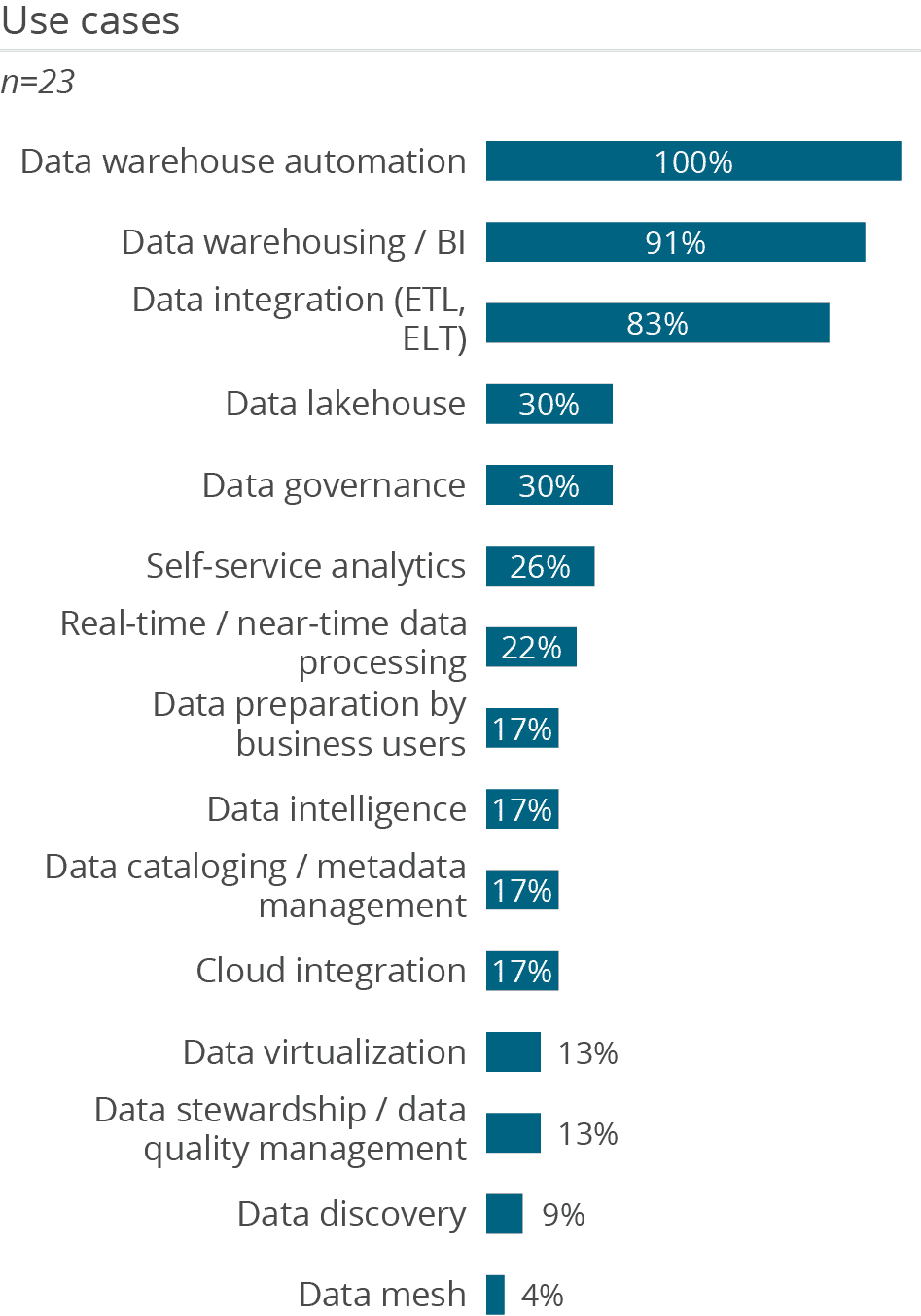

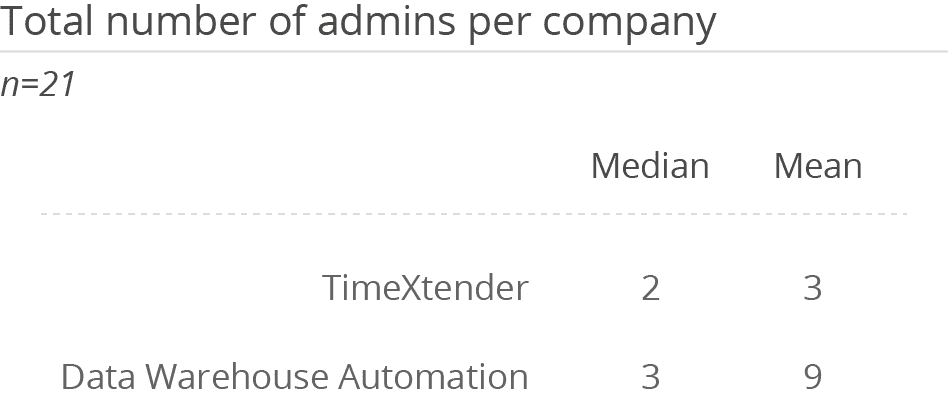
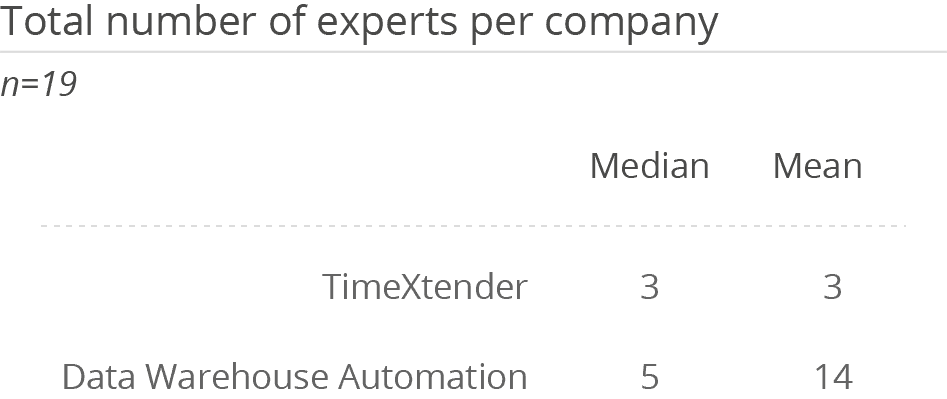
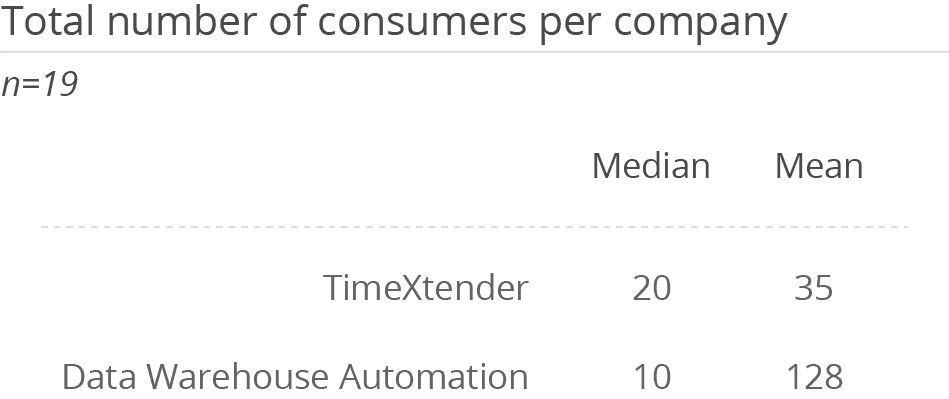

Summary of TimeXtender highlights
User ratings for TimeXtender are consistently above average except in the Functionality and Technical Foundation KPIs. However, 43 percent of respondents claim to experience no significant problems at all with TimeXtender. ‘Ease of use for technical users’ and ‘high functional fit…’ are the top reasons for choosing TimeXtender, with 87 percent and 74 percent respectively. Although utilized mostly by technical users, 57 percent claim ‘ease of use for business users’ as a reason to pick TimeXtender while none of our survey respondents complained of ‘usability issues for business users’. Both TimeXtender’s ‘connectivity to source/target systems’ and ‘strong consulting partnership’ were cited as reasons to buy by 65 percent of respondents. TimeXtender achieved a Net Promoter Score of 57 and an excellent set of results, including three top ranks and 14 leading positions in the Data Warehouse Automation peer group in this year’s Data Management Survey. The typical problems reported by users referred to a lack of functionality and connectivity.
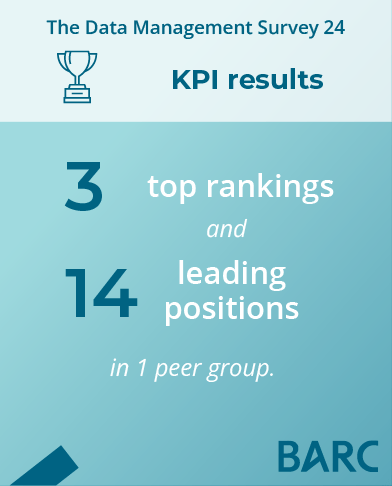
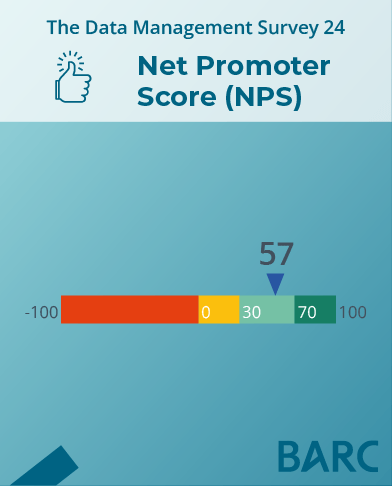
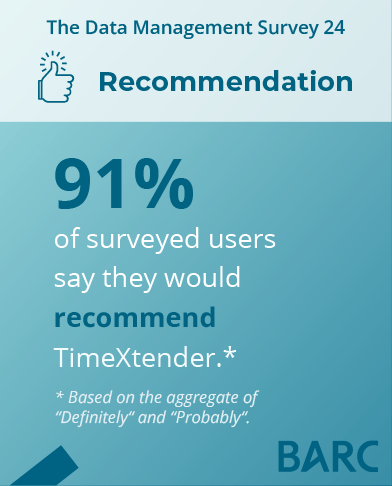
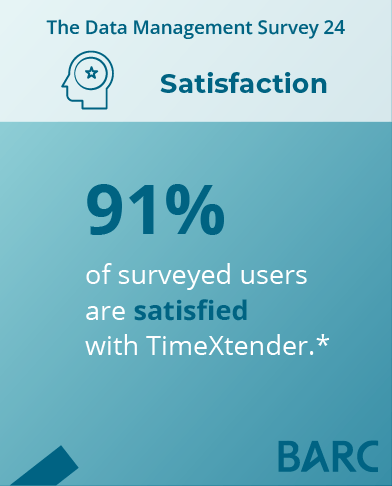
Want to see the whole picture?
BARC’s Vendor Performance Summary contains an overview of The Data Management Survey results based on feedback from TimeXtender users, accompanied by expert analyst commentary.
Contact us to purchase the Vendor Performance Summary- Register for a free sample Vendor Performance Summary download
- If you have any questions, feel free to contact us
